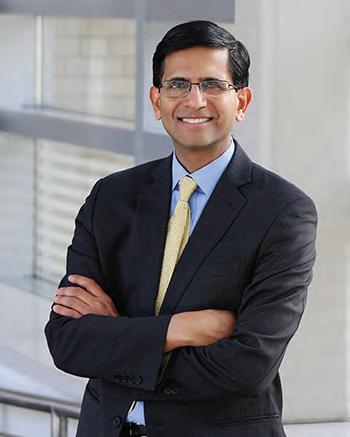
3 minute read
A Collaborative Effort to Improve Cardiovascular Health Equity
Having a healthy heart isn’t just a matter of diet and exercise. Research shows that a person’s socioeconomic status, education, geography and environmental factors – known collectively as social determinants of health (SDoH) – contribute mightily to heart disease in the United States. This is especially true among Black people, whose rates of heart disease death are 30 percent higher than that of other groups. Further, underserved and marginalized communities have an extensive history of mistreatment by the research and medical community in the U.S., often leading to mistrust. And many times, too little is done to involve the community in the research process. With this in mind, a collaborative team of leaders at University Hospitals Harrington Heart & Vascular Institute and Wayne State in Detroit has a new approach to care. Intentional about involving inner city Cleveland residents in every step of the research process, the team is committed to addressing health inequities.
Supported by an $18.2 million grant from the National Institutes of Health, this endeavor was dubbed “ACHIEVE GreatER." It stands for Addressing Cardiometabolic Health Inequities by Early PreVEntion in the Great LakEs Region. It involves collaboration with the community, including the

Quiana Howard, a nurse in the Emergency Department of UH Cleveland Medical Center, is moving to a new role – as Clinical Research Nurse Specialist 1 of ACHIEVE GreatER at UH Harrington Heart & Vascular Institute.
30%
HIGHER RATE OF HEART DISEASE DEATH IN AFRICAN AMERICANS
Cuyahoga Metropolitan Housing Authority (CMHA), one of the nation’s largest and oldest subsidized housing programs located in Cleveland. With this novel care delivery approach, we are going to the place that those most at high risk for heart disease live. It is funding community health workers, nurses and care coordinators to work with CMHA and provide health services, including free risk factor screening, to address social needs and improve heart health outcomes among Black community members.
Specifically, this innovative program aims to identify residents at risk of heart disease and provide personalized, adaptable approaches for engagement and prevention focused on lifestyle and life circumstances. UH and CMHA will coordinate health events across these public housing locations throughout Cleveland to identify residents with health and SDoH needs that community health workers and physicians can address together. Then residents may receive care from UH delivered with a culturally aware and personalized approach – not only medical therapies, but addressing socioeconomic, housing, hunger, workforce, safety, environmental, and psychological needs – issues that are often overlooked in health care.
Importantly, the UH team brings the research expertise to determine whether the new, personalized approach to heart health is working. The proof will be in improved blood pressure, cholesterol levels and diabetes risk among community residents. If this new model demonstrates good results in improving heart health outcomes, it will inform how UH will change the way we practice and deliver care in the best way for our neighbors.
Leaders at UH Harrington Heart & Vascular Institute say this project is just the beginning of what they plan to do to work collectively with people in Northeast Ohio to address SDoH. UH also is collaborating on this project with the Better Health Partnership, a Cleveland-based nonprofit that will provide insights on making this novel clinical and community approach to improved heart care sustainable beyond the grant funding period of five years.
“This is the initial building block around which UH Harrington Heart & Vascular Institute plans to launch a whole range of programs that will address glaring inequities in health care in Northeast Ohio,” said Mehdi Shishehbor, DO, MPH, PhD, President of UH Harrington Heart & Vascular Institute, and Angela and James Hambrick Chair in Innovation. “As a physician caring for many of these patients in our communities, we have a fundamental duty to provide the highest level of care to each individual and address the disparities in gender, race and ethnicity.”

said Sanjay Rajagopalan, MD, the Principal Investigator of the ACHIEVE GreatER Cleveland site; Chief of the Division of Cardiovascular Medicine and Chief Academic and Scientific Officer of UH Harrington Heart & Vascular Institute; as well as the Herman K. Hellerstein, MD, Chair in Cardiovascular Research.





